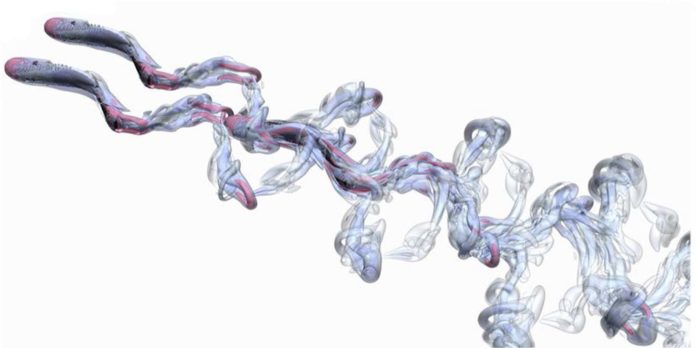In a new study, ETH researchers have developed a highly detailed simulation of the complex interplay between swimming fish and their flow environment. Using this model they found that fish in schools swim in a flow environment full of mechanical energy generated by the movements of their fellow swimmers.
Scientists also gained the detailed knowledge of this mechanism. They proposed that it may have implications for energy-efficient swimming or flying swarms of drones.
Fish schooling was previously just tackled with exceptionally improved models that did not account precisely for the fluid dynamics of the fish swimming. Although, scientists used the supercomputer ‘Piz Daint’ at the Swiss National Supercomputing Centre (CSCS) and enabled these state-of-the-art computationally intensive simulations without simplifications.
Using simulations, scientists identified the swimming behavior of fishes in both 2D and 3D. They analyzed every detail of each individual flow vortex to understand the behavior of the fish.
Scientists also combined for the first time the realistic flow simulations with reinforcement learning, a potent machine learning algorithm.
Scientists noted, “The algorithm is reminiscent of Pavlov’s dog. The agents learn an optimal strategy for achieving a goal by receiving a reward. Here, it was used to train the fish for optimal swimming behavior and to let them decide independently how to most efficiently react to the unsteady flow fields of their fellow swimmers.”
The researchers determined that the fish swam most energetically when they swam not one after the other, as previously suggested, but at an offset from the swimming direction of the leader. At such locations they harnessed the vortices generated by the leader by intercepting them with their head, splitting the vortex into fragments that they then guided down their bodies.
Siddhartha Verma, a postdoc at CSElab said, “This let us demonstrate that fish which suitably position themselves in a school can draw on energy from the prevailing fluid dynamics. We have not examined every aspect involved in the efficient swimming behavior of fish, but it is clear that the developed algorithms and physics learned can be transferred into autonomously swimming or flying robots.”
The study is published online in the Proceedings of the National Academy of Sciences (PNAS), under the leadership of ETH professor Petros Koumoutsakos.
